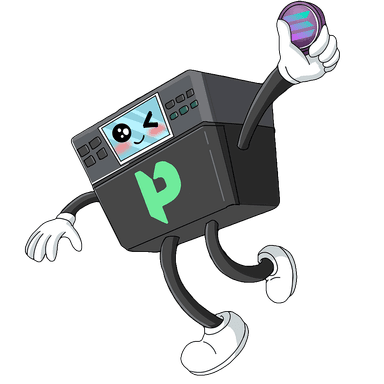What is a Dynamic Bonding Curve?
A Dynamic Bonding Curve (DBC) is an innovative token pricing mechanism that uses mathematical formulas to determine token prices based on supply and demand, rather than traditional order book matching.
PrintFun leverages this technology to create a sustainable token ecosystem with built-in liquidity and automatic rewards for holders.
The Basics of Bonding Curves
At its core, a bonding curve is a mathematical function that defines the relationship between a token's price and its supply. The most common type follows this principle:
As token supply increases, token price increases
As token supply decreases, token price decreases
This creates a predictable pricing model where:
- • Early buyers get tokens at lower prices
- • Later buyers pay higher prices as supply grows
- • Sellers receive a predictable amount based on the curve
- • The pool always maintains liquidity for buying and selling
As token supply increases ↑, token price increases ↑
As token supply decreases ↓, token price decreases ↓
The specific shape of the curve can be adjusted to suit different token economics and goals. Some curves are steeper (more price sensitivity), while others are flatter (less price sensitivity).
What Makes DBCs "Dynamic"?
Beyond Basic Curves
While traditional bonding curves use a single mathematical function, Dynamic Bonding Curves add several advanced features:
- • Variable Fee Structures: Fees can change based on market conditions
- • Multiple Curve Segments: Different formulas for different supply ranges
- • Migration Capabilities: Ability to evolve to other market mechanisms
- • Automated Fee Distribution: Built-in reward systems for holders
Technical Implementation
PrintFun's DBC implementation is built on Meteora's DBC protocol, which uses:
- • Solana Blockchain: For fast, low-cost transactions
- • Smart Contracts: To enforce the curve mathematics
- • Token Vaults: To securely hold liquidity
- • Automated Keepers: For migration and maintenance
- • Fee Distribution System: For automatic holder rewards
How DBCs Compare to Other Market Mechanisms
| Feature | Dynamic Bonding Curve | Order Book Exchange | Constant Product AMM |
|---|---|---|---|
| Price Discovery | Mathematical formula | Bid/ask matching | x*y=k formula |
| Liquidity | Always available | Depends on orders | Always available |
| Price Impact | Predictable, based on curve | Depends on order depth | Higher for low liquidity |
| Fee Distribution | Automatic to holders | To exchange only | To LP providers only |
| Early Adopter Benefits | Strong (lower prices) | None | Moderate (LP fees) |
Benefits of DBCs for Token Projects
Instant Liquidity
Tokens are immediately tradable without needing to find market makers or liquidity providers. The bonding curve itself acts as an always-available counterparty.
Price Stability
The mathematical formula creates predictable price movements, reducing volatility and preventing extreme price manipulation.
Reduced Rug Risk
The bonding curve mechanism makes it difficult for large holders to dump tokens all at once, as the price would rapidly decrease with each sale.
For Token Creators
- • Easy Launch: No need to arrange complex market making
- • Community Alignment: Early supporters benefit from price appreciation
- • Sustainable Growth: Gradual price discovery prevents pump and dumps
- • Clear Path: Migration to DAMM provides a growth milestone
- • Customizable Parameters: Adjust curve to match project goals
For Token Holders
- • Passive Rewards: Earn fees without staking or locking
- • Guaranteed Liquidity: Always able to buy or sell
- • Transparent Mechanics: Price changes follow predictable rules
- • Early Advantage: Better prices for early supporters
- • Long-term Alignment: All holders benefit from increased adoption
PrintFun's DBC Implementation
PrintFun has built upon the core DBC technology with several key enhancements:
Automatic Fee Distribution
75% of all trading fees are automatically distributed to token holders every 10 minutes, creating a passive income stream without requiring staking or locking.
Migration Path
Tokens automatically migrate to Meteora's Dynamic AMM when they reach their Target SOL threshold, providing a clear growth trajectory and enhanced trading experience.
Customizable Fee Tiers
Token creators can choose from multiple fee tiers (1%, 2%, 4%, 6%) to balance between trading volume and holder rewards based on their token's specific needs.
DAMMv1 vs DAMMv2 Options
Creators can choose between DAMMv1 (rewards in both SOL and native token) or DAMMv2 (rewards in SOL only) for post-migration fee distribution, optimizing for their specific tokenomics.
